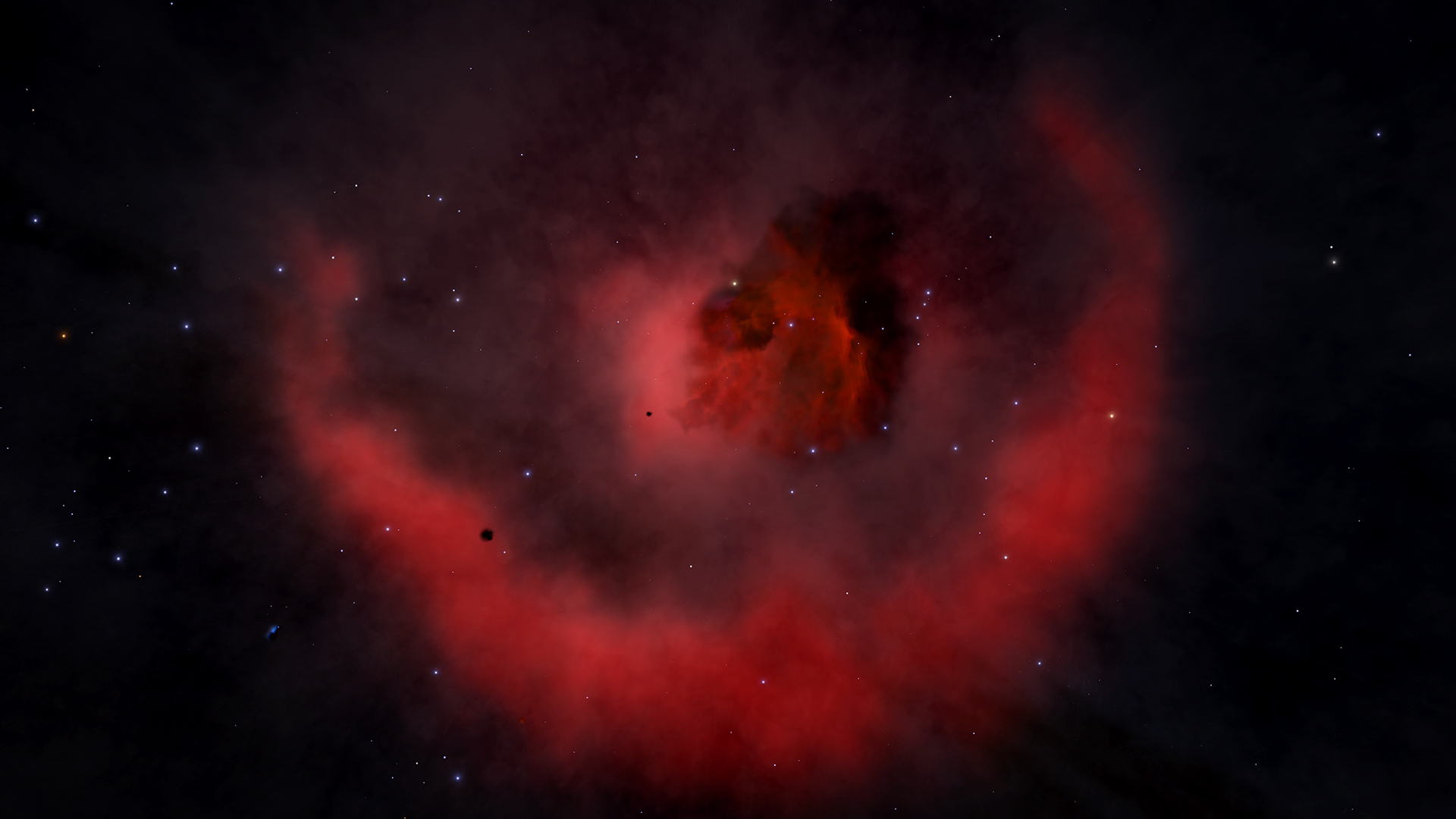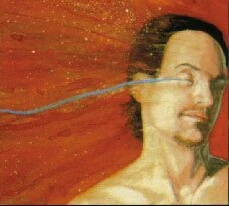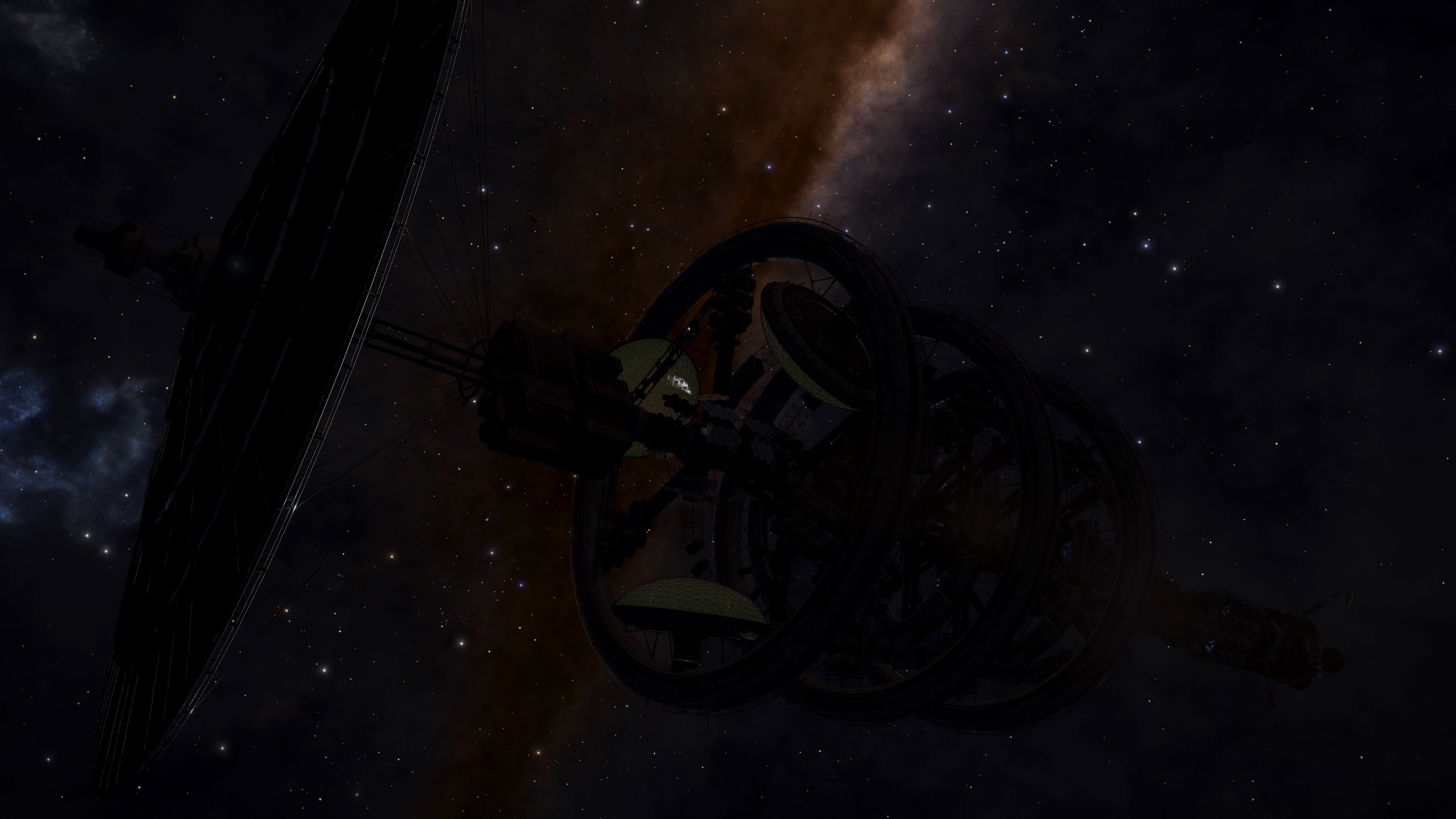al-Khwarizmi - Muḥammad ibn Mūsā al-Khwārizmī, produced vastly influential works in mathematics, astronomy, and geography. Around 820 CE
Aldrin - Buzz Aldrin, astronaut, engineer and fighter pilot. He made three spacewalks as pilot of the 1966 Gemini 12 mission. He was the Lunar Module Eagle pilot on the 1969 Apollo 11 mission and became the second person to walk on the Moon after mission commander Neil Armstrong.
Anders - William Alison Anders, Air Force (USAF) major general, former electrical engineer, nuclear engineer, NASA astronaut, and businessman. In December 1968, he was a member of the crew of Apollo 8, the first three people to leave low Earth orbit and travel to the Moon.
Archer's Wish
Aristarchus - Aristarchus of Samos, ancient Greek astronomer and mathematician who presented the first known heliocentric model that placed the Sun at the center of the known universe, with the Earth revolving around the Sun once a year and rotating about its axis once a day.
Armstrong - Neil Alden Armstrong, astronaut and aeronautical engineer who in 1969 became the first person to walk on the Moon. He was also a naval aviator, test pilot, and university professor.
Aryabhata - the first of the major mathematician-astronomers from the classical age of Indian mathematics and Indian astronomy. For his explicit mention of the relativity of motion, he also qualifies as a major early physicist.
Banks Reach - Jodrell Bank Observatory, The observatory was established in 1945 by Bernard Lovell, a radio astronomer at the university, to investigate cosmic rays. It has played an important role in the research of meteoroids, quasars, pulsars, masers and gravitational lenses, and was heavily involved with the tracking of space probes at the start of the Space Age. -OR- Kirsten Alexandra Banks, astrophysicist and science communicator of the Wiradjuri people, known for her work in promoting mainstream and Aboriginal astronomy.
Banneker - Benjamin Banneker was an African-American naturalist, mathematician, astronomer and almanac author. A landowner, he also worked as a surveyor and farmer.
Belyayev - Pavel Ivanovich Belyayev, first commander of the cosmonaut corps and the cosmonaut who commanded the historic Voskhod 2 mission which saw the first man walk in space in 1965.
Beregovoy - Georgy Timofeyevich Beregovoy, cosmonaut who commanded the space mission Soyuz 3 in 1968. From 1972 to 1987, he headed the Yuri Gagarin Cosmonaut Training Center.
Bessel - Friedrich Wilhelm Bessel, astronomer, mathematician, physicist, and geodesist. He was the first astronomer who determined reliable values for the distance from the sun to another star by the method of parallax.
Borman - Frank Frederick Borman II, Air Force (USAF) colonel, aeronautical engineer, NASA astronaut, test pilot, and businessman. He was the commander of Apollo 8, the first mission to fly around the Moon, and together with crewmates Jim Lovell and William Anders.
Brahe - Tycho Brahe, astronomer known for his comprehensive and unprecedentedly accurate astronomical observations. He was known during his lifetime as an astronomer, astrologer, and alchemist.
Brahmagupta - mathematician and astronomer. He is the author of two early works on mathematics and astronomy. First described gravity as an attractive force. Credited with first clear description of the quadratic formula (the solution of the quadratic equation).
Bykovsky - Valery Fyodorovich Bykovsky, cosmonaut who flew on three space flights: Vostok 5, Soyuz 22, and Soyuz 31. He was also backup for Vostok 3 and Soyuz 37.
Cassini - Giovanni Domenico Cassini, mathematician, astronomer and engineer. Known for his work on astronomy and engineering. He discovered four satellites of the planet Saturn and noted the division of the rings of Saturn; the Cassini Division was named after him.
Celsius - Anders Celsius, astronomer, physicist and mathematician. Proposed (an inverted form of) the Centigrade temperature scale which was later renamed Celsius in his honour.
Cernan - Eugene Andrew Cernan, astronaut, naval aviator, electrical engineer, aeronautical engineer, and fighter pilot. Apollo 17 mission, the eleventh human being to walk on the Moon.
Collins - Michael Collins, astronaut who flew the Apollo 11 command module Columbia around the Moon in 1969 while his crewmates, Neil Armstrong and Buzz Aldrin, made the first crewed landing on the surface.
Conrad - Charles "Pete" Conrad Jr., astronaut, aeronautical engineer, naval officer and aviator, and test pilot, and commanded the Apollo 12 space mission, on which he became the third person to walk on the Moon.
Copernicus - Nicolaus Copernicus, polymath, active as a mathematician, astronomer, and Catholic canon, who formulated a model of the universe that placed the Sun rather than Earth at its center.
Cunningham - Ronnie Walter Cunningham, astronaut, fighter pilot, physicist, entrepreneur, venture capitalist. He was a lunar module pilot on the Apollo 7 mission in 1968. -OR- Clifford J. Cunningham, astronomer and author of numerous books on asteroids.
Eddington - Sir Arthur Stanley Eddington, astronomer, physicist, and mathematician. Philosopher of science and a populariser of science. The Eddington limit, the natural limit to the luminosity of stars, or the radiation generated by accretion onto a compact object, is named in his honour.
Eisele - Donn Fulton Eisele, Air Force officer, test pilot, and later a NASA astronaut. He occupied the command module pilot seat during the flight of Apollo 7 in 1968.
Eratosthenes - Eratosthenes of Cyrene, mathematician, geographer, poet, astronomer, and music theorist. His work is comparable to what is now known as the study of geography, and he introduced some of the terminology still used today.
Gagarin - Yuri Alekseyevich Gagarin, pilot and cosmonaut who, aboard the first successful crewed spaceflight, became the first human to journey into outer space. Travelling on Vostok 1, Gagarin completed one orbit of Earth on 12 April 1961.
Galileo - Galileo di Vincenzo Bonaiuti de' Galilei, astronomer, physicist and engineer. Called the father of observational astronomy, modern-era classical physics, the scientific method, and modern science. Galileo studied speed and velocity, gravity and free fall, the principle of relativity, inertia, projectile motion and also worked in applied science and technology, describing the properties of the pendulum and "hydrostatic balances".
Galle - Johann Gottfried Galle, astronomer, first person to view the planet Neptune and know what he was looking at.
Garnow - George Gamow, polymath, theoretical physicist and cosmologist. Discovered a theoretical explanation of alpha decay by quantum tunneling, invented the liquid drop model and the first mathematical model of the atomic nucleus, worked on radioactive decay, star formation, stellar nucleosynthesis, Big Bang nucleosynthesis (which he collectively called nucleocosmogenesis), and molecular genetics.
Gauss - Johann Carl Friedrich Gauss, mathematician, geodesist, and physicist who made significant contributions to many fields in mathematics and science. Gauss ranks among history's most influential mathematicians.
Glenn - John Herschel Glenn Jr., aviator, engineer, astronaut, businessman, and politician. He was the third American in space, and the first American to orbit the Earth, circling it three times in 1962.
Gordon Cooper - Leroy Gordon "Gordo" Cooper Jr., aerospace engineer, test pilot, United States Air Force pilot, and the youngest of the seven original astronauts in Project Mercury, the first human space program of the United States.
Grissom - Virgil Ivan "Gus" Grissom, engineer, pilot, and member of the Mercury Seven selected by National Aeronautics and Space Administration's (NASA) as Project Mercury astronauts to be the first Americans in outer space. He was a Project Gemini and an Apollo program astronaut.
Halley - Edmond (or Edmund) Halley, astronomer, mathematician and physicist. He was the second Astronomer Royal in Britain. Catalogued the southern celestial hemisphere and recorded a transit of Mercury across the Sun. He realised that a similar transit of Venus could be used to determine the distances between Earth, Venus, and the Sun. Used Newton's law of universal gravitation to compute the periodicity of Halley's Comet. Discovered the proper motion of the "fixed" stars
Hawking's Reach - Stephen William Hawking, theoretical physicist, cosmologist, and author who was director of research at the Centre for Theoretical Cosmology at the University of Cambridge. Scientific works included a collaboration with Roger Penrose on gravitational singularity theorems in the framework of general relativity, and the theoretical prediction that black holes emit radiation, often called Hawking radiation. Hawking was the first to set out a theory of cosmology explained by a union of the general theory of relativity and quantum mechanics. He was a vigorous supporter of the many-worlds interpretation of quantum mechanics.
Hipparchus - astronomer, geographer, and mathematician. He is considered the founder of trigonometry, but is most famous for his incidental discovery of the precession of the equinoxes. With his solar and lunar theories and his trigonometry, he may have been the first to develop a reliable method to predict solar eclipses. Hipparchus is sometimes called the "father of astronomy".
Hunter's Gap - POSSIBLY Alan Hunter, astronomer who spent his career at the Royal Greenwich Observatory, serving as Director between 1973 and 1975. OR - relating to the Orion Constellation?
Huygens - Christiaan Huygens, mathematician, physicist, engineer, astronomer, and inventor who is regarded as a key figure in the Scientific Revolution. In physics, Huygens made seminal contributions to optics and mechanics, while as an astronomer he studied the rings of Saturn and discovered its largest moon, Titan. As an engineer and inventor, he improved the design of telescopes and invented the pendulum clock, the most accurate timekeeper for almost 300 years.
Khayyam - Ghiyāth al-Dīn Abū al-Fatḥ ʿUmar ibn Ibrāhīm Nīsābūrī, commonly known as Omar Khayyam, polymath, known for his contributions to mathematics, astronomy, philosophy, and poetry.
Komarov - Vladimir Mikhaylovich Komarov, test pilot, aerospace engineer, and cosmonaut. In October 1964, he commanded Voskhod 1. He became the first Soviet cosmonaut to fly in space twice. A parachute failure caused his Soyuz capsule to crash into the ground, making him the first human to die in a space flight.
Labyrinth
Lagrange - Joseph-Louis Lagrange, mathematician, physicist and astronomer, later naturalized French. He made significant contributions to the fields of analysis, number theory, and both classical and celestial mechanics.
Laplace - Pierre-Simon, Marquis de Laplace, scholar and polymath whose work was important to the development of engineering, mathematics, statistics, physics, astronomy, and philosophy.
Le Verrier - Urbain Jean Joseph Le Verrier, astronomer and mathematician who specialized in celestial mechanics and is best known for predicting the existence and position of Neptune using only mathematics. Widely regarded as a dramatic validation of celestial mechanics, and is one of the most remarkable moments of 19th-century science.
Legacy
Leonov - Alexei Arkhipovich Leonov, cosmonaut, Air Force major general, writer, and artist. The first person to conduct a spacewalk, selected to be the first Soviet person to land on the Moon although the project was cancelled.
Lowell - Percival Lowell, businessman, author, mathematician, and astronomer who fueled speculation that there were canals on Mars, and furthered theories of a ninth planet within the Solar System. He founded the Lowell Observatory in Flagstaff, Arizona, and formed the beginning of the effort that led to the discovery of Pluto 14 years after his death.
McDivitt - James Alton McDivitt Jr., test pilot, United States Air Force (USAF) pilot, aeronautical engineer, and NASA astronaut in the Gemini and Apollo programs.
Mitchell - Maria Mitchell, astronomer, librarian, naturalist, and educator. Discovered a comet named 1847 VI (modern designation C/1847 T1) that was later known as "Miss Mitchell's Comet" in her honor. First internationally known woman to work as both a professional astronomer and a professor of astronomy.
Newton - Sir Isaac Newton, polymath active as a mathematician, physicist, astronomer, alchemist, theologian, and author who was described in his time as a natural philosopher. He was a key figure in the Scientific Revolution and the Enlightenment that followed. His pioneering book consolidated many previous results and established classical mechanics. Considered one of the greatest and most influential scientists in history.
Nikolayev - Andriyan Grigoryevich Nikolayev, cosmonaut. The third Soviet cosmonaut to fly into space.
Oort - Jan Hendrik Oort, astronomer who made significant contributions to the understanding of the Milky Way and who was a pioneer in the field of radio astronomy. Determined that the Milky Way rotates and overturned the idea that the Sun was at its center. He also postulated the existence of the mysterious invisible dark matter in 1932, Discovered the galactic halo, a group of stars orbiting the Milky Way but outside the main disk. Additionally Oort is responsible for a number of important insights about comets, including the realization that their orbits "implied there was a lot more solar system than the region occupied by the planets."
Popovich - Pavel Romanovich Popovich, cosmonaut. Popovich was the fourth cosmonaut in space, the sixth person in orbit, the eighth person in space.
Ptolemy - Claudius Ptolemy, mathematician, astronomer, astrologer, geographer, and music theorist, who wrote about a dozen scientific treatises, three of which were of importance to later Byzantine, Islamic, and Western European science.
Richards Gap - Mercedes Tharam Richards, astronomy and astrophysics professor. Her investigation focused on computational astrophysics, stellar astrophysics and exoplanets and brown dwarfs, and the physical dynamics of interacting binary stars systems. However, her pioneering research in the tomography of interacting binary star systems and cataclysmic variable stars to predict magnetic activity and simulate gas flow is her most known work. OR Richard Noel "" Richards, naval officer and aviator, test pilot, chemical engineer, and a former NASA astronaut. He flew aboard four Space Shuttle missions in the 1980s and 1990s. OR Paul William Richards, engineer and a former NASA Astronaut. He flew aboard one Space Shuttle mission in 2001.
Rickman
Sagan - Carl Edward Sagan, astronomer and science communicator. His best known scientific contribution is his research on the possibility of extraterrestrial life. He assembled the first physical messages sent into space, the Pioneer plaque and the Voyager Golden Record, which were universal messages that could potentially be understood by any extraterrestrial intelligence that might find them. He argued in favor of the hypothesis, which has since been accepted, that the high surface temperatures of Venus are the result of the greenhouse effect.
Schirra - Walter Marty Schirra Jr, naval aviator, test pilot, and NASA astronaut. Flew the Mercury-Atlas 8 mission. Achieved the first space rendezvous. Commanded Apollo 7.
Sevastyanov - Vitaly Ivanovich Sevastyanov, cosmonaut and an engineer who flew on the Soyuz 9 and Soyuz 18 missions.
Shatalov - Vladimir Aleksandrovich Shatalov, cosmonaut who flew three space missions of the Soyuz programme: Soyuz 4, Soyuz 8, and Soyuz 10.
Shepard - Alan Bartlett Shepard Jr., astronaut. Second person and the first American to travel into space and, the fifth and oldest person to walk on the Moon.
Tereshkova - Valentina Vladimirovna Tereshkova, engineer, cosmonaut. She was the first woman in space.
The Veil
Titov - Gherman Stepanovich Titov, cosmonaut, the second human to orbit the Earth. The first person to orbit the Earth multiple times (a total of 17), the to spend more than a day in space, the first photographer from space: he made the first manual photographs from orbit, thus setting a record for modern first photos of Earth from space. He also was the first person to film the Earth using a professional quality Konvas-Avtomat movie camera, which he used for ten minutes.
Tombaugh - Clyde William Tombaugh, astronomer. Discovered Pluto. Also discovered many asteroids, and called for the serious scientific research of unidentified flying objects.
Tycho
Walker - Shannon Walker, physicist, astronaut, spent over 163 days in space. -OR- Charles David "Charlie" Walker, engineer, astronaut who flew on three Space Shuttle missions in 1984 and 1985 as a Payload Specialist for the McDonnell Douglas Corporation. -OR- David Mathieson Walker, naval officer, aviator, fighter pilot, test pilot, astronaut. He flew aboard four Space Shuttle missions in the 1980s and 1990s. -OR- Anne Walker, astronomer and one of the first women employed in paid routine work in astronomy in her country.
Wilson - Alexander Wilson, surgeon, type-founder, astronomer, mathematician and meteorologist. He was the first scientist to use kites in meteorological investigations. -OR- Sir Robert Wilson, astronomer and physicist. Worked at the Royal Observatory on stellar spectra. His works laid the groundwork for the development of the Great Space Observatories, such as the Hubble Space Telescope. -OR- Robert Woodrow Wilson, astronomer who, along with Arno Allan Penzias, discovered cosmic microwave background radiation (CMB) in 1964. -OR- Stephanie Diana Wilson, engineer, astronaut. She flew to space onboard three Space Shuttle missions.
Woodrow - POSSIBLY Robert Woodrow Wilson, astronomer who, along with Arno Allan Penzias, discovered cosmic microwave background radiation (CMB) in 1964.
Yegorov - Boris Yegorov, physician and cosmonaut who became the first medical doctor to travel to space.
Yngvi-Freyr
forums.frontier.co.uk







